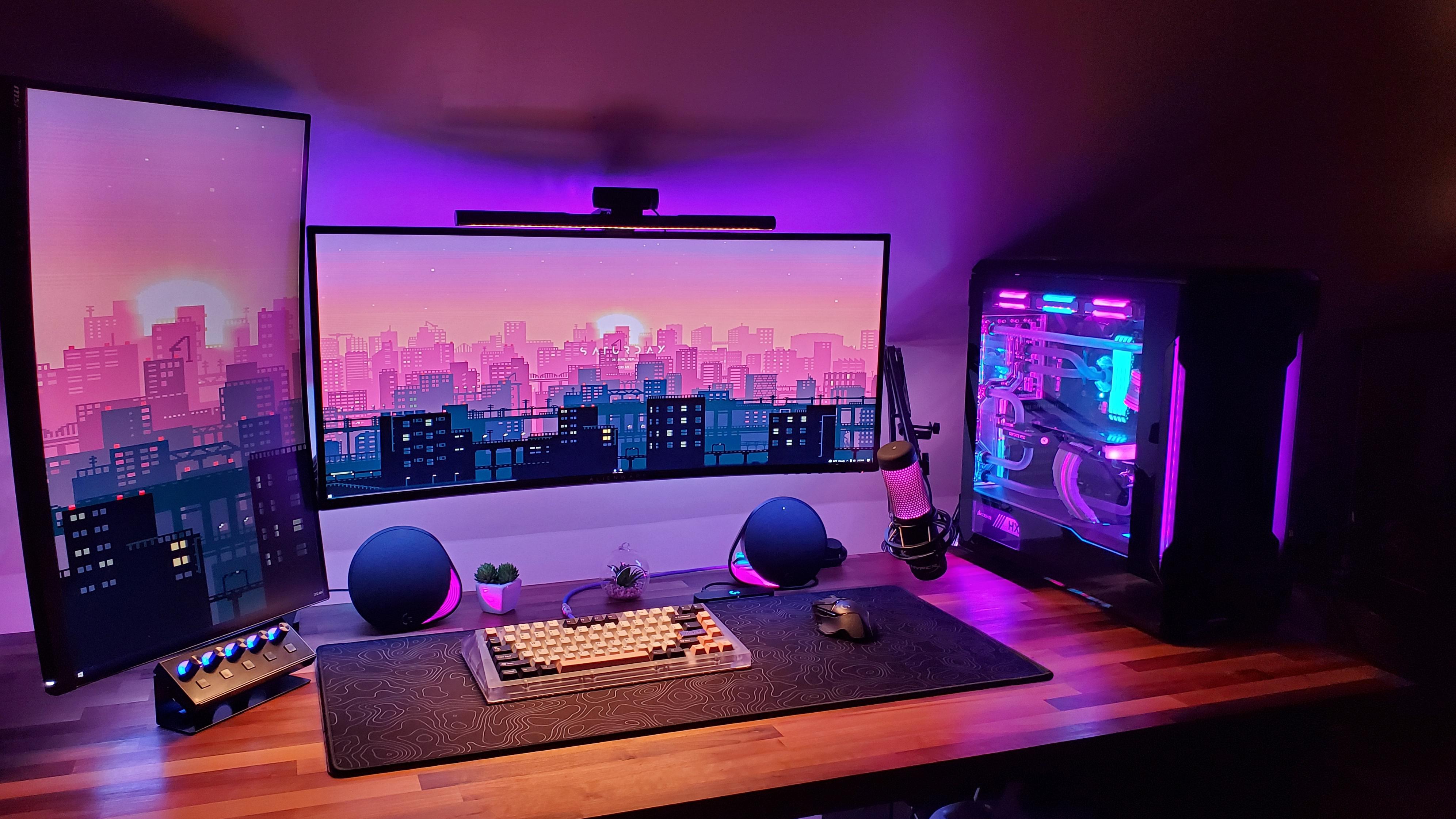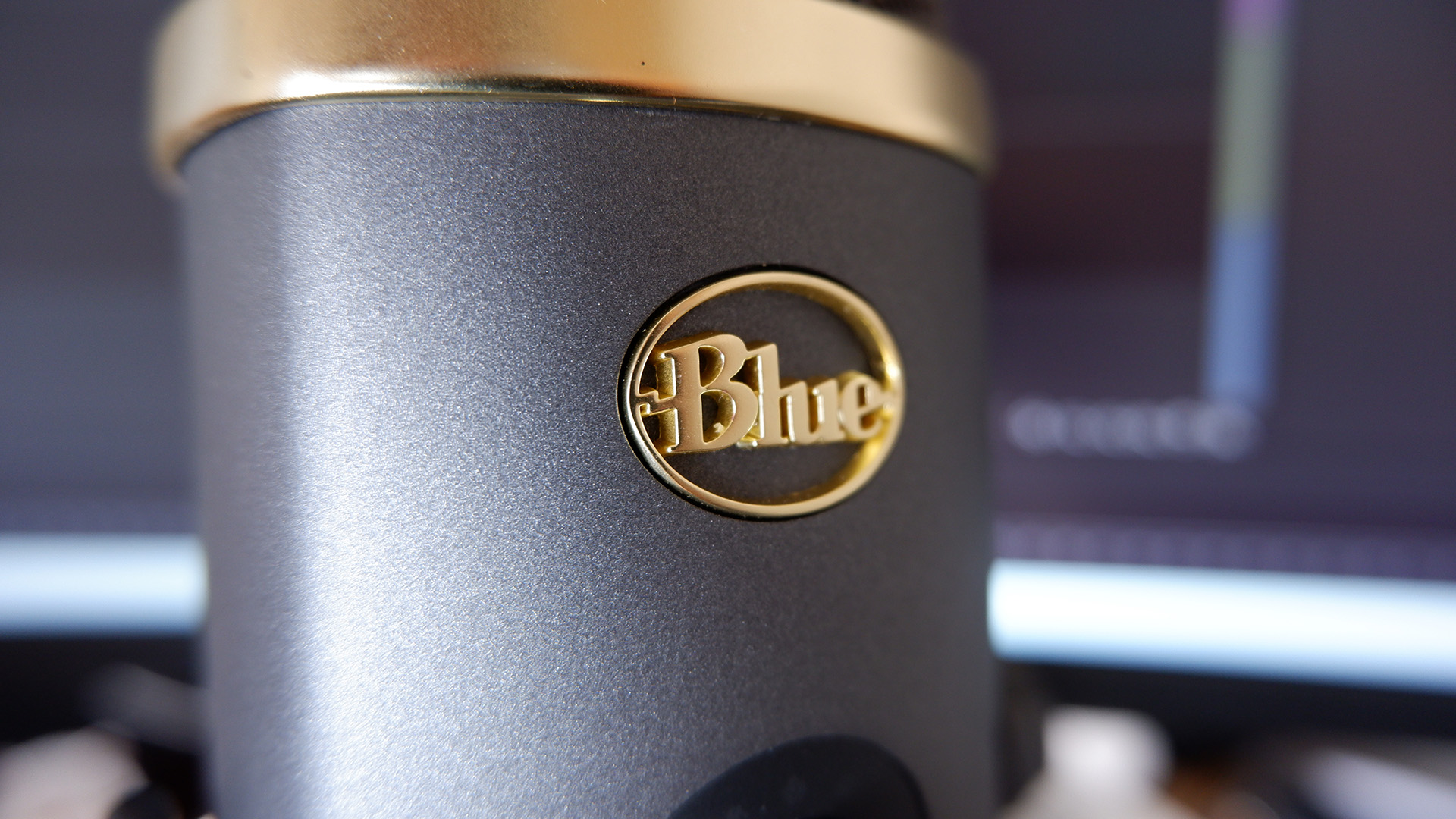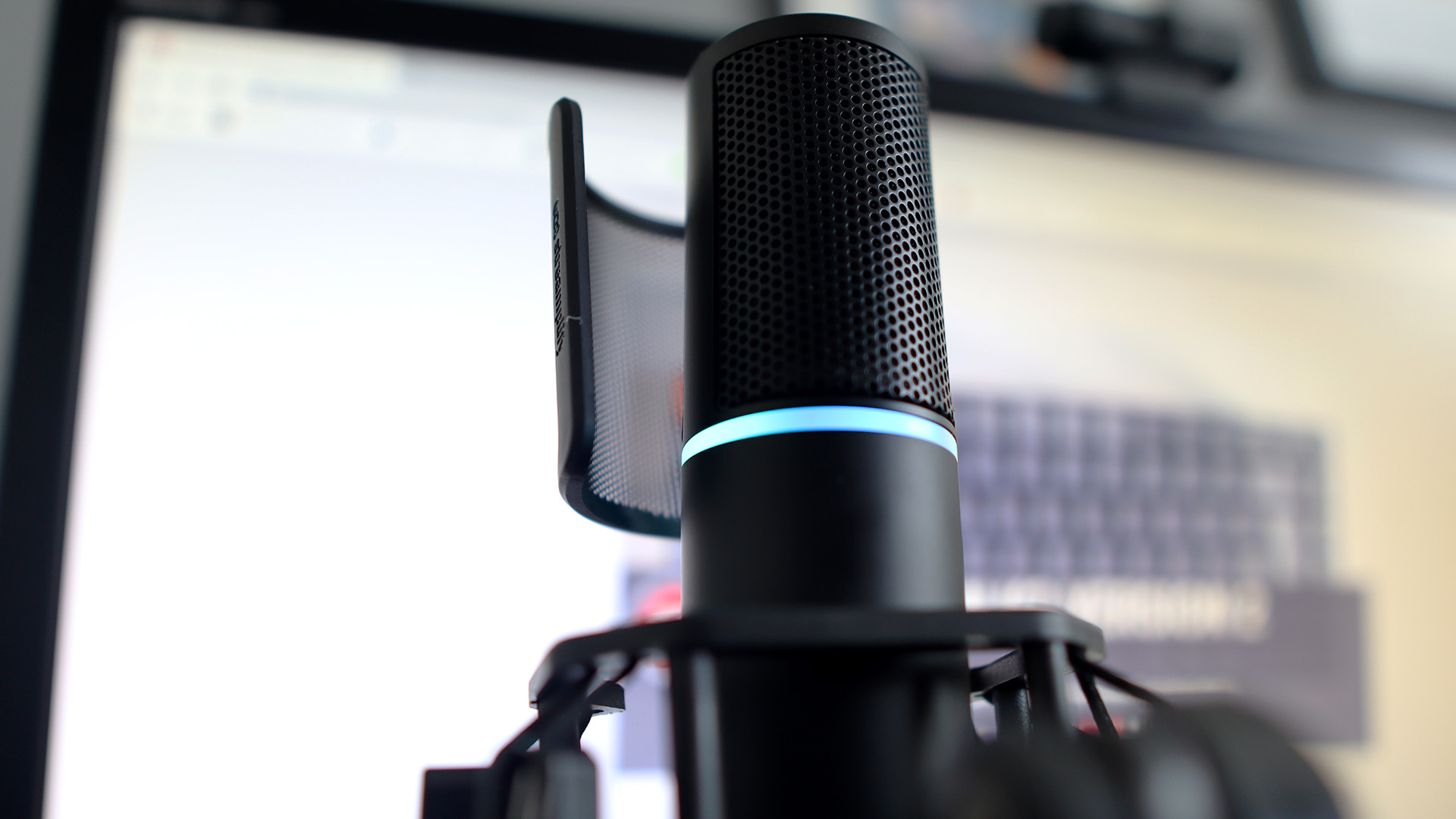Microphones are the new gaming status symbol
Studio-quality mics and boom arms are the new gaming chair.

Nobody needed a gaming mic in the late '90s. Hell, webcams barely even existed yet—if you were attending QuakeCon and wanted to inspire a roiling envy among your fellow PC elitists, your best bet was a garish, chromed-out case. You know what I'm talking about: the crystalline chassis, the glittering water cooling kits, the monolithic fans that sounded like a spaceship taking off. This was the threshold that every up-and-coming geek was expected to aspire to. No peripherals, no bells and whistles, just a big machine and a chunky monitor, pumping out Counter-Strike headshots all night long. You could take that PC to your local LAN party and show everyone who's boss.
Microphones have morphed from a fringe boutique curiosity to an out-an-out necessity
In this wonderful era, the only people who owned computer microphones used them for their day jobs.
Decades have turned over since then. Today if you scroll through the vainglorious posts on r/Battlestations, you will notice a new omnipresent trend: massive, studio-ready microphones perched on everyone's desks, as if the owners are about to either record a podcast or play 10 hours of Apex Legends for a live audience. Mics are everywhere. They are now a stylistic orthodoxy, like wearing a pocket square to a wedding.
There have certainly been other innovations to the gamer aesthetic: Few people pack a 30-inch CRT screen these days, and we don't purchase graphics cards emblazoned with horrifying low-res aliens. But the biggest sea change in the community is that niggling desire to broadcast your voice with the sonorous depth of a millionaire Twitch streamer, even if it's to an audience of three on Discord.
Microphones have morphed from a fringe boutique curiosity to an out-an-out necessity. Our battlestations look sad and malnourished without them.
"A great audio set-up will definitely strike jealousy in someone," says Andrew, a 15-year old Floridian who showed off his rig in a choice r/Battlestations post earlier this month. Take a look, and you'll find a scarlet PC chassis, a starchy computer chair, and yes, a dangling, mesh-tipped microphone. "It's the same when I see someone with a nice keyboard or whatever. Everything you have will make someone jealous."
As a zoomer, Andrew is at the forefront of the generational turnover within the PC contingency. He wanted a microphone superior to the chintzy plastic headsets that remained the standard among matchmaking queues throughout the 2000s and 2010s. But as gamers became celebrities in the latter half of the decade—as the stereotype shifted from basement-dwelling grognard towards a Kool Aid-dyed teen in an LA mansion—so too did the men and women in their wake.
Keep up to date with the most important stories and the best deals, as picked by the PC Gamer team.
There is truly nothing wrong with my headset. My friends can hear me just fine, and I rarely need to record professional audio. But after internalizing the Twitch norms and seeing all the fancy HyperX mics trickle across the timeline, I too have started to feel a primordial gamer inadequacy that brings me back to my teenage years. If you want to know how vulnerable you are to the whims of consumer movements—even at the supposedly solid age of 31—spend a day staring at PC furnishments until your own desk appears naked and meager without an amplifier.
"I think that all the kids want a 'complete' streaming setup like they see their favorite streamers online have. So whether or not they use it for streaming or just casually, it’s become a part of a complete setup," says another poster on r/Battlestations, who opted for a $99 Blue Yeti. "I think it has everything to do with wanting to be like the streamers they look up to."

It's hard to know when, exactly, this revolution began. Livestreaming is older than anyone gives it credit for—kids were running livestreams on local access TV in the early 1990s. I was watching Stickam in high school, which was now 15 years ago. Laptops didn't even have built-in mics back in those days, so external equipment was a requirement, not a flex. (Case in point: Some of my happiest gaming memories occurred during vanilla World of Warcraft raids, where I coordinated healing rotations with the help of a tinny, beige microphone borrowed from my parents.) Xbox Live certainly helped bring voice chat beyond hardcore PC Ventrilo servers and into the gaming mainstream, but cheapo tinny headsets remained the go-to for years.
My best guess is that dedicated mics became more widely adopted when young people started to get the bulk of their gaming information from YouTube, because Ninja, Shroud, and Pokimane spend much of their public life with their faces partially obscured by a fuzzy black mass.
"Why are microphones so popular in Battlestations?" reads the title to a Reddit thread posted in the summer of 2018, which I'd argue represented the absolute zenith of the gamer-celebrity ascendency. (It was the year Drake played Fortnite on Twitch—I rest my case.) Theories trickle through the replies, all orbiting around the same core premise: Everyone imagines themselves as a YouTuber.
"Streaming has exploded as a form of entertainment," says Adam, a 26-year-old in Canada and another Blue Yeti owner, in an interview with PC Gamer. "So every stream is advertising a 'battlestation,' so to speak." Viewer numbers do indeed keep rising year after year.
Personally, I don't harbor any delusions of social media stardom. The idea of managing a community filled with children on lunch break seems totally soul-killing, as does the idea of playing exactly one videogame for thousands of hours. I doubt I'm alone in that, and I imagine that many of you reading this story feel the same way. That said, Leif Johnson, a longtime journalist and PC Gamer contributor, does highlight one way microphone envy seeps into all of us aging greybeards. He recalls a recent Valorant session with his usual group of buddies. One of them had stopped using his external microphone in favor of a headset, which crackled with an unfavorable fidelity compared to the resonant warmth he was used to.
"I admit making some subtle digs trying to get him to go back to [the other mic,]" says Johnson. "In games like that I like to be able to hear the person as clearly as possible, so I like it when they have a quality mic."

This is the future we're headed towards, man. As microphones become more popular, and as we become more accustomed to our friends speaking with the pristine clarity of podcasters, we are slowly going to become less patient with anyone still relying on a crappy old headset. Yes, that was satisfactory in the early Xbox Live days, when we called out MechWarrior strategies on a poverty bitrate.
But in 2022 gamers are weaned on the texturous depth of Twitch streamers and YouTube hustlers. If you join the party with a microphone that makes you sound like Leeroy Jenkins, expect to be laughed out of the room. And everyone who's anyone knows you need that Rode mic arm, not some $15 imitator off Amazon.
Don't expect this trend to reverse course anytime soon. We are all going to be external microphone people eventually—for reasons both aesthetic and utilitarian. It is yet another thing to buy in a hobby that continually moves the goalposts. (The RAM, the graphics cards, the chiseled decals on the case, the utterly unnecessary water cooling system, and so on and so forth forever.) The kids set the rules, and we race to catch up, which I suppose is how every subculture is supposed to work.
I just hate knowing that I'm about to be out $150 in order to feel a little less inadequate. But hey, at least my voice will sound fabulous.

Luke Winkie is a freelance journalist and contributor to many publications, including PC Gamer, The New York Times, Gawker, Slate, and Mel Magazine. In between bouts of writing about Hearthstone, World of Warcraft and Twitch culture here on PC Gamer, Luke also publishes the newsletter On Posting. As a self-described "chronic poster," Luke has "spent hours deep-scrolling through surreptitious Likes tabs to uncover the root of intra-publication beef and broken down quote-tweet animosity like it’s Super Bowl tape." When he graduated from journalism school, he had no idea how bad it was going to get.



